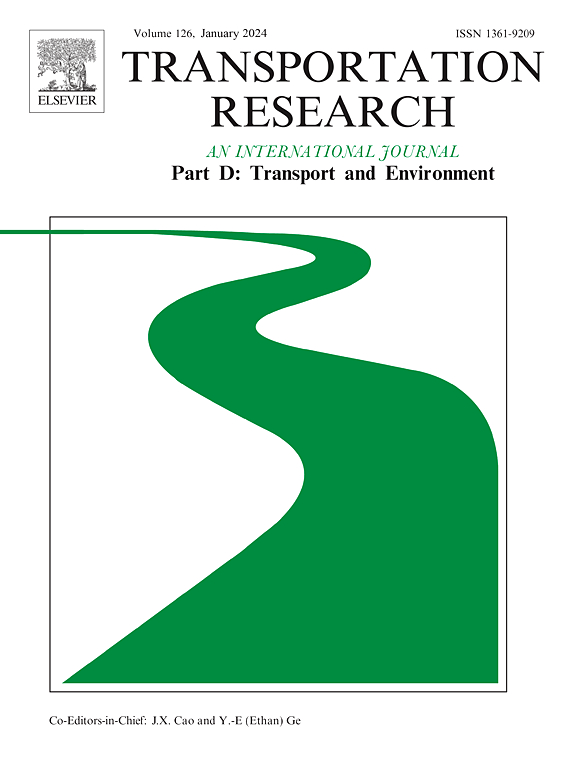城市道路网络对气候变化的适应能力:一种空间拓扑方法
IF 7.7
1区 工程技术
Q1 ENVIRONMENTAL STUDIES
Transportation Research Part D-transport and Environment
Pub Date : 2025-08-11
DOI:10.1016/j.trd.2025.104948
引用次数: 0
摘要
随着气候变化加剧,确保城市道路网络抵御中长期气候变化的能力至关重要。本研究建立了一个结合复杂网络理论、拓扑测量和空间气候暴露的新框架,以评估气候变化情景下道路网络的恢复能力,重点关注降水和温度变化。熵加权TOPSIS基于拓扑和空间标准确定关键网络成分,而弹性通过四种成分去除策略进行评估:随机、基于拓扑、基于气候和空间拓扑。分析了标准化效率、巨型部件的相对尺寸、平均最短路径和直径等指标。将该方法应用于德国杜伊斯堡,结果表明,中部和东南部地区需要优先考虑气候适应,其中包含关键成分,特别是在SSP2-4.5和SSP3-7.0降水情景下,恢复力较低。研究强调了整合空间和拓扑因素进行有效气候适应规划的必要性。本文章由计算机程序翻译,如有差异,请以英文原文为准。
Resilience of urban road networks to climate change: a spatial-topological approach
As climate change intensifies, ensuring the resilience of urban road networks against mid- to long-term climatic shifts is crucial. This study develops a novel framework combining complex network theory, topological measures, and spatial climate exposure to assess road network resilience under climate change scenarios, focusing on precipitation and temperature changes. Entropy-weighted TOPSIS identifies key network components based on combined topological and spatial criteria, while resilience is evaluated through four component removal strategies: random, topological-based, climate-based, and spatial-topological. Metrics such as normalized efficiency, relative size of the giant component, average shortest path, and diameter are analyzed. Applying this approach to Duisburg, Germany, results highlight that central and southeastern regions require priority climate adaptation, containing key components especially under SSP2-4.5 and SSP3-7.0 precipitation scenarios, where resilience is lower. The study underscores the necessity of integrating spatial and topological factors for effective climate adaptation planning.
求助全文
通过发布文献求助,成功后即可免费获取论文全文。
去求助
来源期刊
CiteScore
14.40
自引率
9.20%
发文量
314
审稿时长
39 days
期刊介绍:
Transportation Research Part D: Transport and Environment focuses on original research exploring the environmental impacts of transportation, policy responses to these impacts, and their implications for transportation system design, planning, and management. The journal comprehensively covers the interaction between transportation and the environment, ranging from local effects on specific geographical areas to global implications such as natural resource depletion and atmospheric pollution.
We welcome research papers across all transportation modes, including maritime, air, and land transportation, assessing their environmental impacts broadly. Papers addressing both mobile aspects and transportation infrastructure are considered. The journal prioritizes empirical findings and policy responses of regulatory, planning, technical, or fiscal nature. Articles are policy-driven, accessible, and applicable to readers from diverse disciplines, emphasizing relevance and practicality. We encourage interdisciplinary submissions and welcome contributions from economically developing and advanced countries alike, reflecting our international orientation.

 求助内容:
求助内容: 应助结果提醒方式:
应助结果提醒方式:


